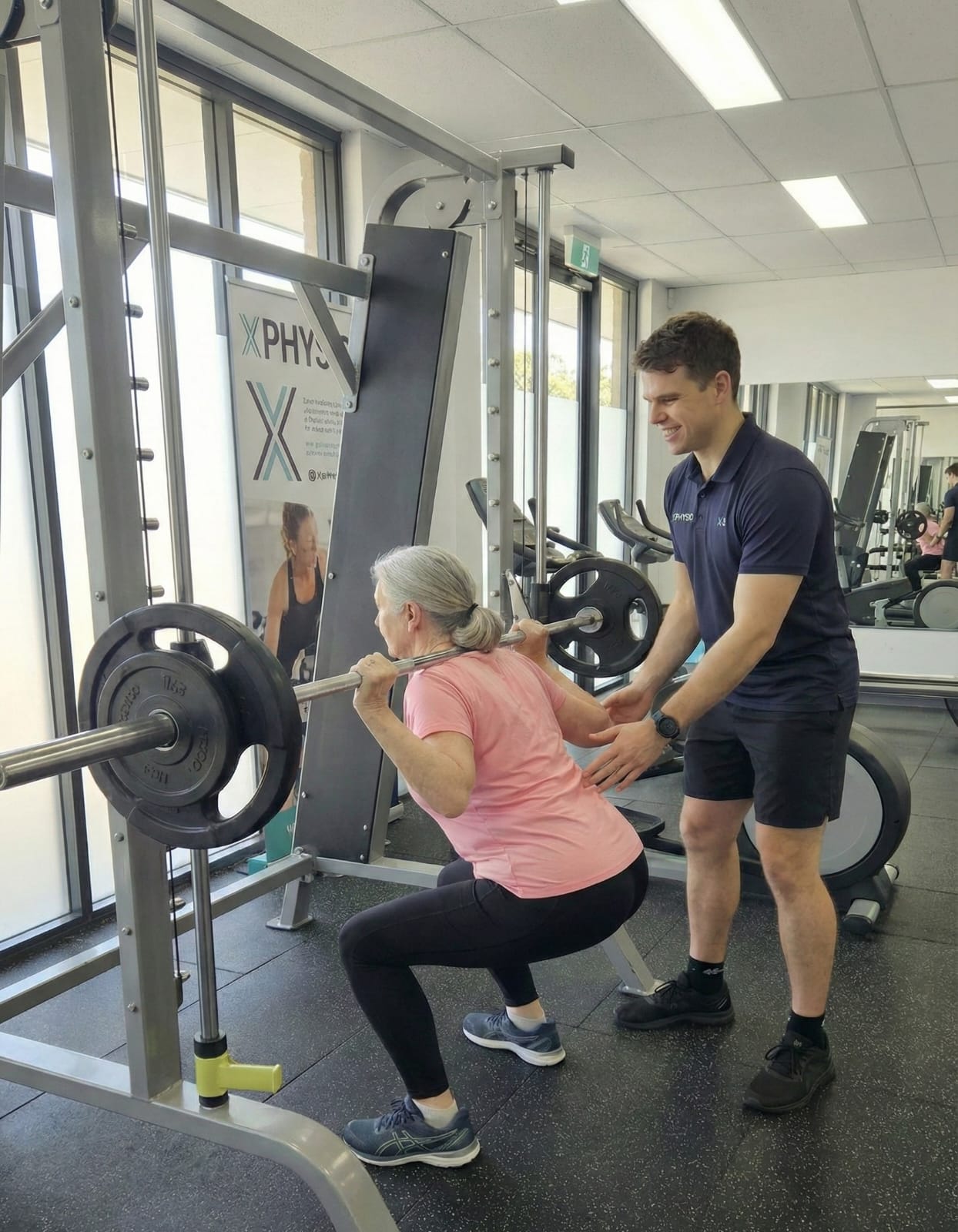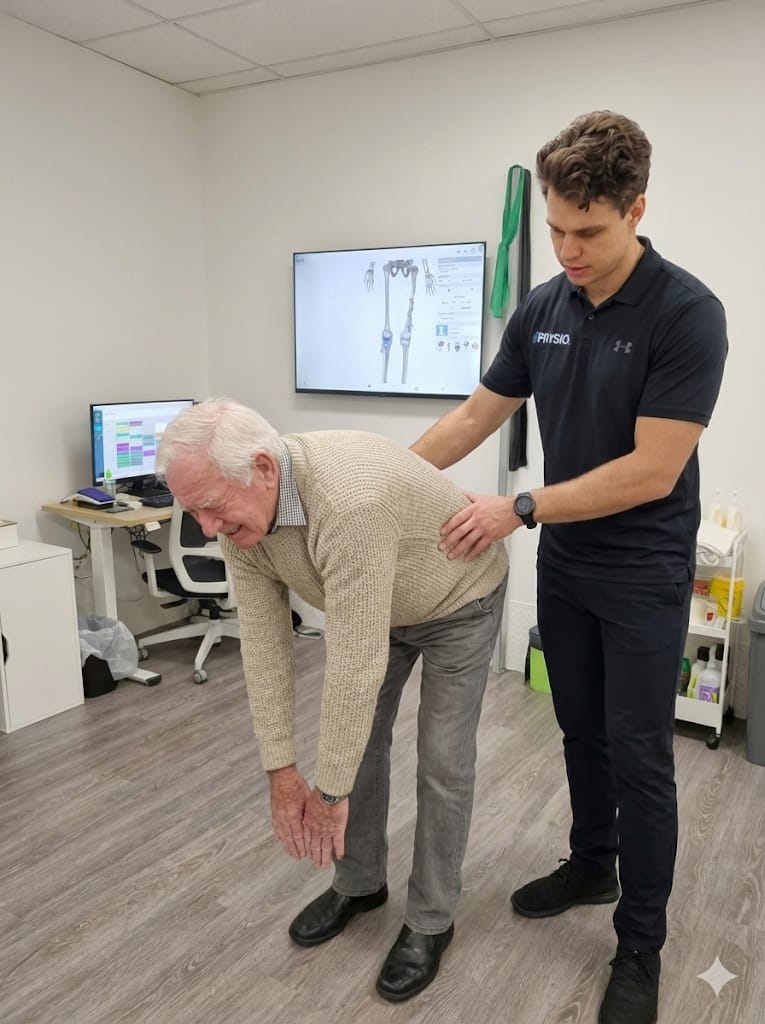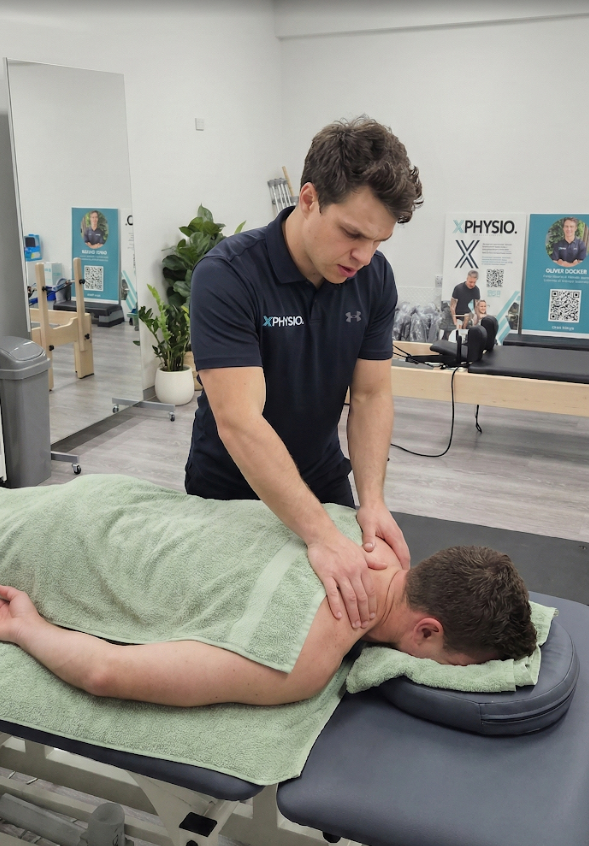
34) Ankle Pain: They Don’t Always Sprain
When most people think about ankle pain, they immediately picture a sprained ankle. But there are loads of other culprits that can leave you hobbling — and some are trickier to diagnose. Whether it’s tendon issues, impingement, or nerve irritation, understanding the full picture is crucial for proper recovery. Let’s dive in! If you want to read more about ankle sprains: CLICK HERE
What Other Injuries Cause Ankle Pain?
While ankle sprains are the classic injury, there are several other conditions that can cause pain here — sometimes even worse than a sprain! Here are some of the big ones we see in the clinic:
1. Ankle Impingement
Impingement happens when soft tissues (like ligaments or tendons) or bony structures get pinched within the joint during movement. It’s a common issue after repeated sprains, but it can also develop from overuse — especially in sports like soccer, netball, and running.
There are two main types:
- Anterior impingement (front) – usually feels stiff or painful when you try to bend your foot upwards.
- Posterior impingement (back) – often hurts when pointing the toes down, like pushing off or kicking.
Signs you might have impingement:
- Sharp pain at a specific spot in the ankle
- Swelling around the front or back of the joint
- A feeling of “catching” or “blocking” with movement
- Loss of full range
Physiotherapy focuses on restoring normal movement, reducing swelling, and strengthening the surrounding muscles to unload the pinched joint. Early treatment is key to avoiding long-term stiffness or degeneration.

2. Peroneal Tendinopathy
The peroneal tendons run along the outside of your ankle and foot, helping stabilise your balance — especially on uneven ground. Overuse (think running, hiking, or even walking on sand) can lead to tendinopathy, a painful irritation of the tendon.
Common symptoms:
- Pain on the outside
- Pain that worsens with activity
- Swelling along the tendon
- A feeling of weakness or instability
Without treatment, this condition can drag on for months. Physiotherapy focuses on reducing load, strengthening the muscles, and retraining balance to get you back on track.
3. Posterior Tibial Tendinopathy
This injury often masquerades as a vague ache on the inside of the ankle or arch. It’s common in people who do a lot of walking, standing, or running — particularly if they have flat feet or poor footwear.
Signs to watch for:
- Pain along the inner gutter
- Swelling around the tendon
- Difficulty standing on your toes
- A slowly collapsing arch
Treatment usually involves supportive taping, orthotics, strengthening exercises, and sometimes a temporary rest from impact activities.

4. Osteochondral Lesions
Sounds fancy, right? An osteochondral lesion is damage to the cartilage and underlying bone inside the ankle joint, usually following a traumatic injury like a bad sprain or fall.
Key symptoms:
- Deep ankle pain (especially with weight-bearing)
- Swelling after activity
- Clicking or catching in the ankle
Left untreated, these can cause ongoing issues and even lead to early arthritis. Physiotherapy plays a massive role in restoring mobility and strength after this injury — often helping people avoid surgery.
5. Tarsal Tunnel Syndrome
Think of this as “carpal tunnel” but in your ankle. The tibial nerve runs through a tight space (the tarsal tunnel) on the inside of the ankle, and sometimes it gets compressed.
What you might notice:
- Burning or tingling in the ankle or foot
- Numbness
- Pain that worsens with standing or walking
Early physio can make a big difference by addressing underlying issues like swelling, biomechanics, or even nerve gliding exercises.
6. Ankle Arthritis
Ankle arthritis isn’t as common as hip or knee arthritis, but it can still wreak havoc — especially after an old injury. It usually develops over years and tends to be more common in people who’ve had multiple sprains, fractures, or high-impact careers (hello, tradies!).
Symptoms include:
- Stiffness in the morning or after rest
- Swelling and tenderness
- Pain that worsens with activity
Physiotherapy can help maintain ankle mobility, strengthen supporting muscles, and reduce pressure through the joint — delaying the need for surgery as long as possible.
How Physiotherapy Can Help
No matter the cause, getting a proper diagnosis and starting the right rehab early can save you months (or years) of ankle pain. Physiotherapy treatment may include:
✅ Detailed Assessment: Understanding the specific structures involved through movement tests, palpation, and sometimes referral for imaging.
✅ Pain Management: Taping, manual therapy, gentle exercises, and load management strategies.
✅ Strengthening and Balance Exercises: Building strength in the ankle and surrounding muscles (like the calf, glutes, and core) helps prevent future injuries.
✅ Activity Modification: Helping you stay active safely, without aggravating the injury.
✅ Return to Sport or Work Planning: Step-by-step guidance to get you back to full activity without setbacks.

Real Patient Story: Kate’s Journey Back to Hiking
Kate, a 36-year-old outdoor enthusiast, came to see us after feeling persistent pain on the outside of her right ankle. She initially thought it was “just a sprain” after a bushwalk six months earlier, but the pain hadn’t settled despite rest and ice.
After a thorough assessment, we diagnosed her with peroneal tendinopathy — likely aggravated by the uneven trails and her love for minimalist shoes. An ultrasound confirmed mild swelling and thickening of the tendon.
Here’s what her physio plan looked like:
- Short-term activity modification (no hills or unstable terrain initially)
- Targeted strengthening exercises for the peroneal muscles and glutes
- Taping to unload the tendon during walks
- Footwear advice, moving her to a more supportive shoe with slight ankle support
- Progressive return to hiking after 6 weeks of building up strength and endurance
After about 10 weeks, Kate was back hiking pain-free — and she even completed the Coast Track in the Royal National Park without a hitch! She still keeps up with her strength program twice a week to prevent future flare-ups.
Common Mistakes to Avoid
Here are a few things we often see that can stall recovery:
🚫 Pushing through pain too early: Just because you can walk doesn’t mean the ankle is ready for high loads.
🚫 Ignoring strength and balance exercises: These are crucial, even after pain settles.
🚫 Wearing the wrong shoes: Minimalist shoes can be great for some, but when dealing with an injury, a little extra support goes a long way.
🚫 Not seeking help soon enough: Chronic issues are harder to fix than acute ones — early intervention is key!
Final Thoughts
Ankle pain can sneak up in many different forms — not just sprains! Getting a proper diagnosis and starting a tailored rehab plan can be the difference between limping along for months and getting back to doing what you love.
If you’re dealing with stubborn ankle pain, don’t tough it out — book in for an assessment. With the right treatment, you can recover faster, stronger, and smarter.
References and Further Reading
- Better Health Channel: Ankle injuries and disorders
- Physiopedia: Ankle Impingement
- Sports Medicine Australia: Foot and Ankle Injuries



